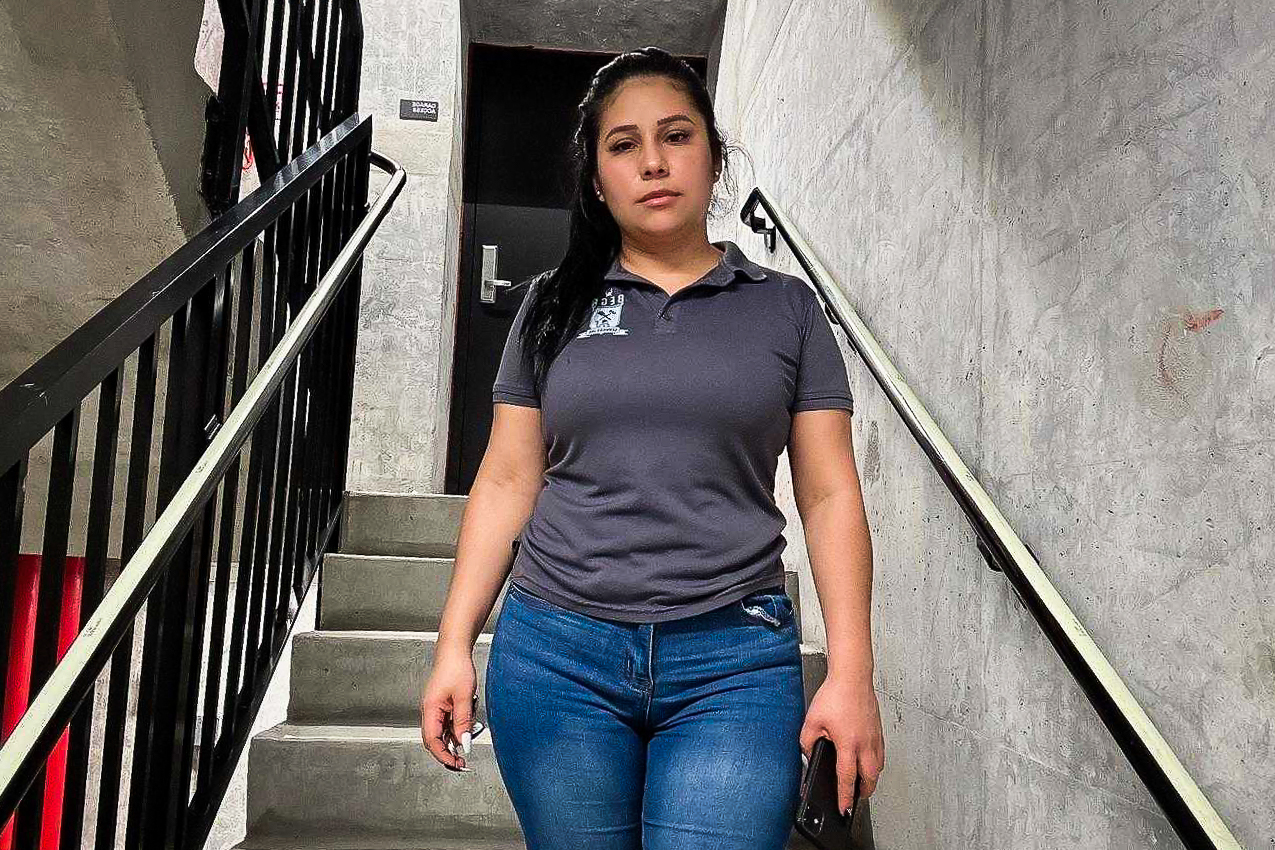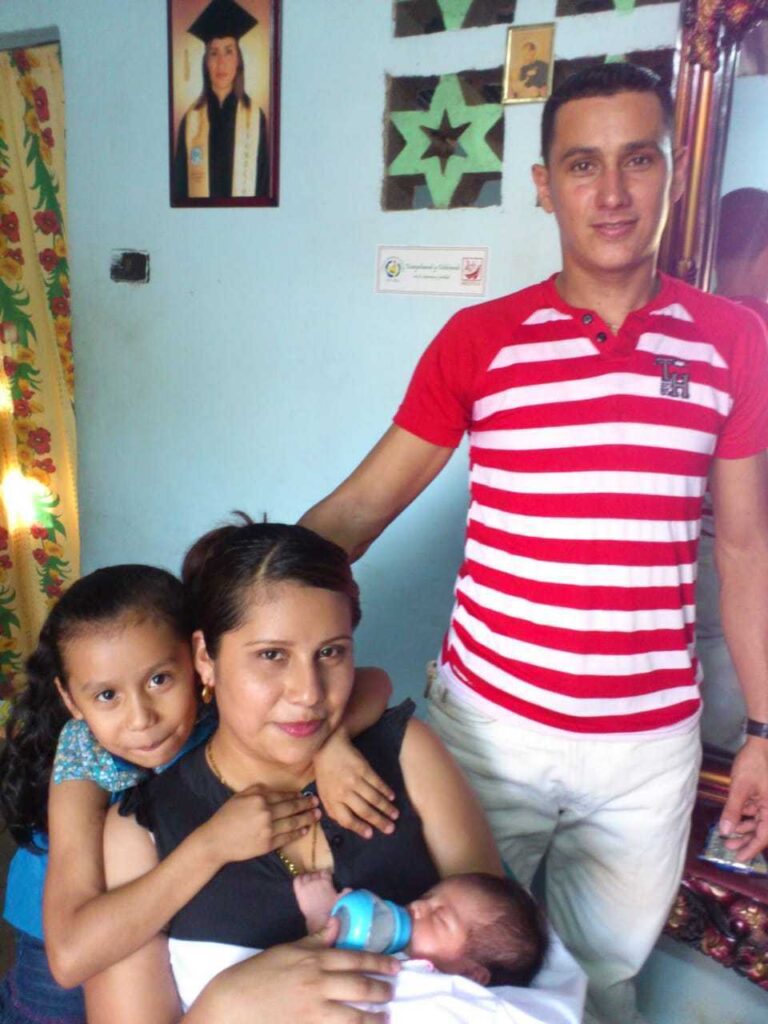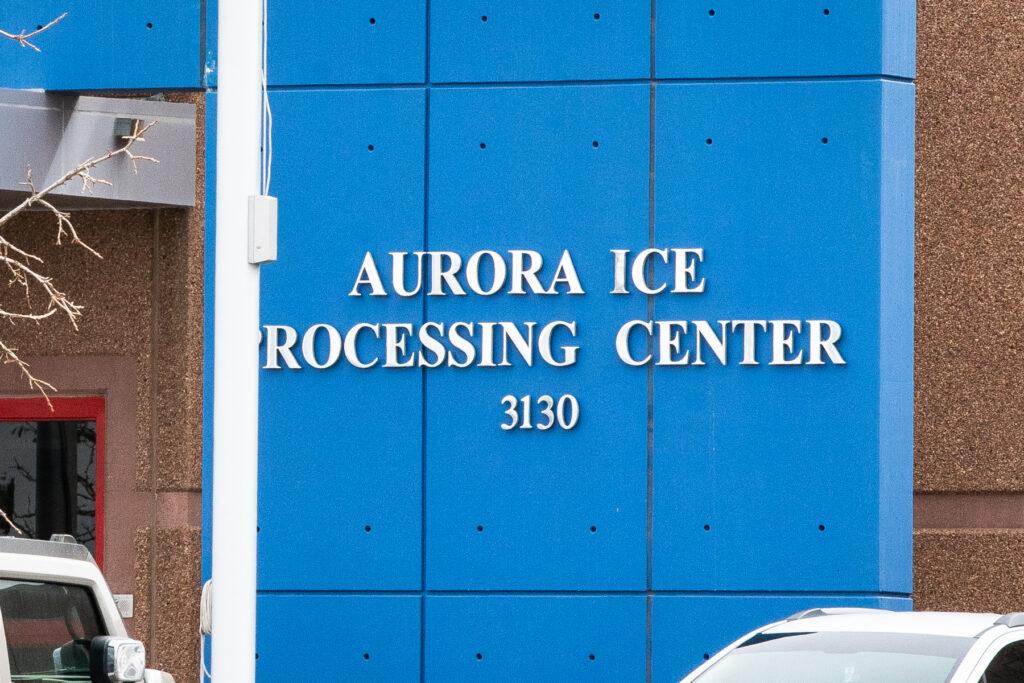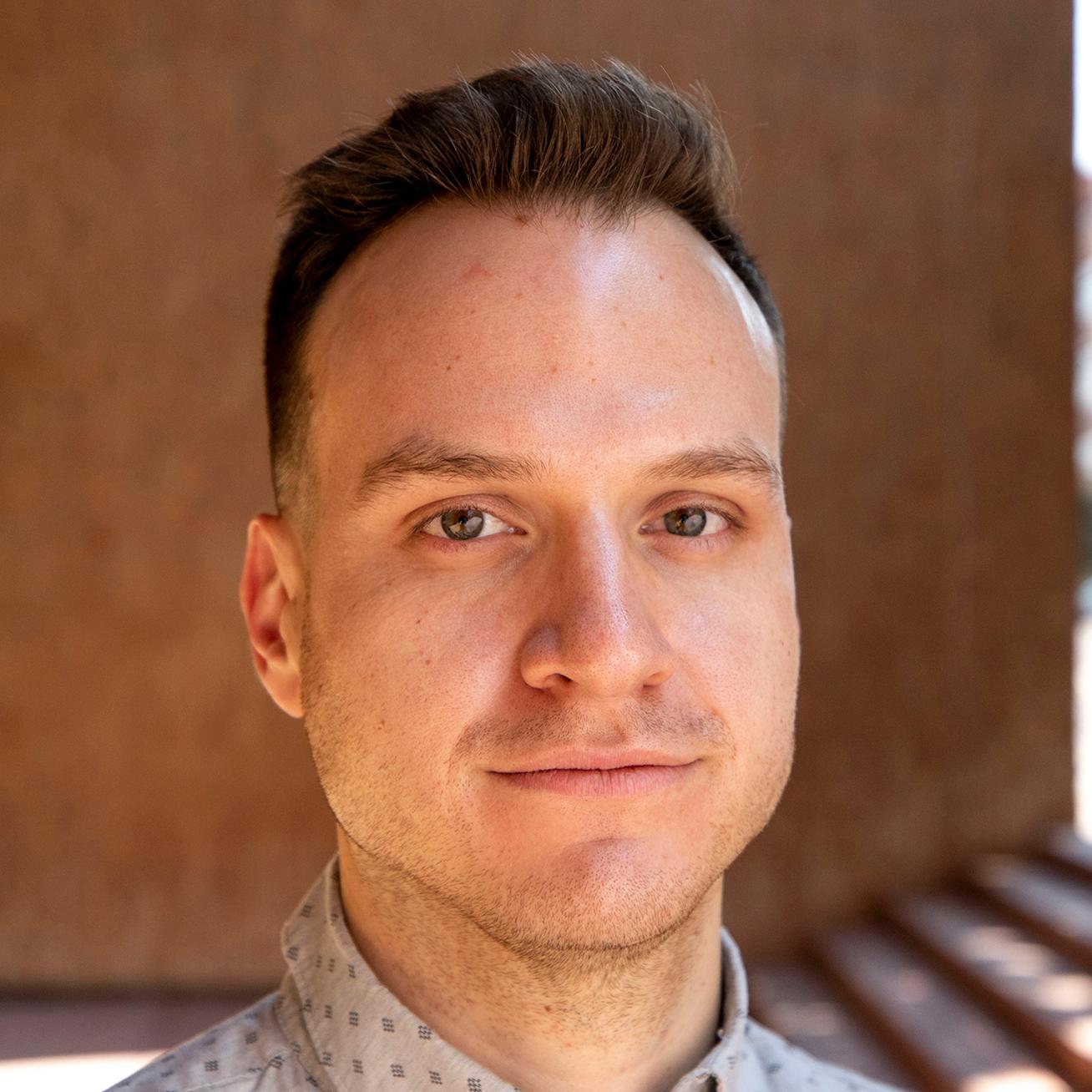
Dorling Peralta remembers the excitement in her partner’s voice when he reached the United States’ border with Mexico on April 13, 2022.
Melvin Ariel Calero Mendoza had traveled for more than a month by car and foot from Matagalpa, Nicaragua. When the 39-year-old father of two reached the border crossing near El Paso, Texas, his voice rang through her cell phone speaker.
“Yes! I’m here finally,” Peralta recalls Calero Mendoza saying. “I’m going to turn myself in. I’m going to be OK.”
Peralta was living in Miami, Florida. She made a similar journey to the states from Nicaragua in 2020, gaining asylum status and a work permit to send money to their two children back home. She felt comforted by Mendoza’s call.
“I felt happy,” she said, speaking in Spanish. “We had a plan.”
But soon after, Calero Mendoza’s journey took a radically different turn.
He wasn’t granted asylum. He spent six months in Immigrations and Customs Enforcement detention while working through his immigration case, mostly at the ICE detention center in Aurora. The facility is run by GEO Group, a private contractor.
During a rec yard soccer game one morning, Calero Mendoza injured his foot. Over the next few weeks, he was repeatedly given mild painkillers by staff, who did not refer him for further care. The injury developed into a blood clot, which traveled to his lungs and killed him on Oct. 13, 2022.
A year after his death, Peralta and other family members say they remain in the dark about how Calero Mendoza slipped through the cracks. Peralta, who still lives in Miami, says she hasn’t received information about his case directly from ICE, instead relying on second-hand information from family members and immigrant advocates.
Since Calero Mendoza’s death, the agency has released a three-page death report with a timeline of the events leading up to his pulmonary embolism. GEO Group has, through several statements, expressed condolences to his family.
“We take our role as a service provider to the federal government with the utmost seriousness and strive to treat all those entrusted to our care with dignity and respect,” a GEO spokesman said in a statement.
The response falls short of offering an explanation for Calero Mendoza’s death, Peralta said.
Her daughter Aydein, 16, who lives with Peralta's mother in Nicaragua, still refuses to accept that her father is gone. Her son Jasser, 8, cries on the phone about missing his dad.
“It still doesn’t even feel real yet,” she said. “We are still in denial.”
Plans to live and work in the U.S.
Peralta and Calero Mendoza first met in high school in the early 2000s. Both were living in Nicaragua, and they quickly became boyfriend and girlfriend.
“He was smart and he worked a lot,” Peralta said.
The couple moved in together after high school. Calero Mendoza worked at a distribution center, and he was studying business administration off and on while providing for their kids. He loved soccer and watching his favorite team, FC Barcelona, play.
He was unhappy with life in Nicaragua, though, Peralta said.
Political turmoil had shaken the country for years. Food prices were rising. Gang violence was rampant. After several years, the two, who weren’t married but had a domestic partnership, decided they should leave the country.

“We wanted a better life for our kids,” she said.
In early 2020, the couple decided Peralta should attempt to move to the United States, claim political asylum and work. She traveled by foot and bus to the U.S. border with Mexico and turned herself into U.S. Customs and Border Patrol.
She was released from custody within 24 hours, she said. She then applied for asylum and received it within a few weeks.
Peralta then traveled to Miami and visited with a local legal organization, which helped her obtain a work permit, she said. She started working in childcare and, later, cleaned offices, earning money to send back to Mendoza and her kids.
“Our plan was for Melvin to do the same while the kids stayed with my mother,” Peralta said.
In March 2022, Calero Mendoza left Nicaragua by foot to head to the U.S. border, Peralta said. The two talked almost every day during his month-long journey.
After arriving at the border and calling Peralta, he turned himself in to CBP agents in El Paso. Within two days, according to ICE records, Mendoza was transferred into ICE detention in New Mexico. He’d spend two weeks there before being transferred to the Aurora facility, which holds roughly 1,000 migrants awaiting immigration court dates.
Calero Mendoza remained optimistic during his first few months of detention, Peralta said. But that changed as his legal case hit hurdles.
An immigration judge issued Calero Mendoza a bond in June, but he couldn’t afford to pay it, Peralta said. He appealed the bond and filed an asylum application, but the judge dismissed both and issued him a deportation order on Oct. 5, 2022.
Title 42, the former federal policy that restricted asylum status, was still active, which likely played a role in the case, Peralta said.
She spoke to him on the phone on a Wednesday, several days before his scheduled deportation. During the call, Calero Mendoza was complaining about the foot injury and was sad about getting deported, she said.
“It will be OK,” Peralta remembers telling him.
The next day, she received a call from family in Nicaragua. They told her Calero Mendoza had collapsed in detention and died at a hospital.
“I was in shock,” she said. “I felt very alone.”
Fumbles in medical care and an emergency response
ICE documents and Calero Mendoza’s autopsy report outline how his soccer injury eventually turned fatal.
During his first visit to GEO Group’s medical staff in September 2022, a nurse provided Calero Mendoza with acetaminophen and ibuprofen to treat his foot pain. He was instructed to rest.
Two weeks later, records show, he visited a nurse again to report a sharp pain in his right big toe. The nurse gave him more over-the-counter pain medication and told him to apply ice.
During a third visit, Calero Mendoza reported “severe” right calf pain and swelling. Again, a nurse advised him to ice the area.
Two weeks later, on Oct. 13, Calero Mendoza was in a common area of the detention center when he collapsed and “showed signs of confusion,” according to ICE documents. Facility staff responded to Calero Mendoza and called 911 within two minutes of his fall.
It took 20 minutes for outside EMS to arrive, according to ICE records. GEO Group staff also made several fumbles on a 911 call, according to a recording obtained by NPR News and shared with CPR News. One facility guard forgot the detention center’s address and layout while talking to the dispatcher, delaying responders.
Once they arrived, EMS staff transferred Calero Mendoza to a nearby hospital. He later went into cardiac arrest, becoming the third detainee to die at the facility since 2012.
A year-long push for more details
Shortly after Calero Mendoza’s death, Rep. Jason Crow of Aurora joined U.S. Senators Michael Bennet and John Hickenlooper to request an independent investigation.
“We request that the DHS OIG and ICE Office of Professional Responsibility independently investigate Mr. Calero Mendoza’s death and make the results of the investigations publicly available,” they wrote in a letter to ICE’s inspector general.
The detailed review was finished this past spring, according to an ICE spokesperson. It supposedly contains video evidence, interviews with GEO Group staff members and other records related to the case. CPR News requested the report through the Freedom of Information Act in April, but ICE has not responded.

Immigrant rights groups in Colorado and other family members of Calero Mendoza have also requested the report. Calero Mendoza’s sister Adilia Calero Mendoza, who lives in Indiana, began working with a lawyer in Colorado to access the document.
The team immediately hit roadblocks in their attempts to obtain it, as well as other public records related to the case, said Elizabeth Jordan, director of the University of Denver’s Immigration Law and Policy Clinic and legal representation for Calero Mendoza’s sister.
“Unfortunately it is not uncommon for families to be left completely in the dark, or pretty close to completely in the dark, about what happened to their loved ones while in ICE detention,” Jordan said.
She added that the family of 64-year-old Kmayar Samimi, who died at the Aurora facility in 2017, faced similar delays. ICE has faced criticisms about transparency for years.
Jordan’s team has since filed a federal lawsuit to access the report about Calero Mendoza, among other records related to the case. It’s one of several FOIA lawsuits currently pending.
In September, Colorado’s congressional delegation sent another letter to ICE’s acting director, demanding the agency respond to public record requests like Jordan’s.
“We believe oversight and transparency of facilities operated by or for the Department of Homeland Security (DHS) is crucially important and we encourage you to remit this document as expeditiously as time allows,” the Democratic delegation wrote.
Congressman Crow told CPR News he has requested more oversight hearings for ICE to help solve transparency issues. Meanwhile, poor medical care continues inside GEO’s Aurora facility, he said.
“We can legislate and compel agency action,” Crow said. “But I firmly believe that these private immigration detention centers should not exist.”
The lack of a full picture of deaths in ICE detention makes it even more difficult for families to process what happened to their loved ones.
“I think it's probably universally true that it's impossible to meaningfully grieve or maybe meaningfully cope with somebody's death if you don't have a basic story you can tell yourself about what happened to them,” Jordan said.
A struggle to grieve and look forward
Local advocacy groups raised more than $5,000 to transport Calero Mendoza’s body back to Nicaragua. Family members held a funeral service in November 2022.
Calero Mendoza’s children attended, Peralta said, but they haven’t found peace.
“My son has suffered academically,” she said. “My daughter doesn’t accept it and she’s different now.”
Peralta wasn’t able to attend the service herself. She couldn’t leave her day job at an office building in Miami because she continues to send money back to Nicaragua for her children.
She still hopes to bring them to the United States some day after she obtains permanent residency.
“There are criminals that get into the U.S. easily,” she said. “And there are people who want a better life, but aren’t able to. I can’t understand why.”
To mark one year since Calero Mendoza’s death, she prayed about him and went to mass.
“I want people to know he was a good friend,” she said. “He wanted a better life.”
Advocates say they plan to honor Calero Mendoza at a vigil outside ICE’s detention facility in Aurora around the Day of the Dead holiday in November.
Stephanie Rivera and Alejandro A. Alonso Galva contributed reporting to this story.
Previous coverage
- Aug. 16, 2023: 911 call from Aurora ICE detention center reveals disorganized response to medical emergencies
- April 18, 2023: Independent autopsy of death at Aurora ICE facility confirms man died of embolism tied to untreated injury
- Feb. 15, 2023: Aurora ICE death autopsy released, raises questions about medical care in federal detention centers
- Nov. 3, 2022: Activists hold Día de los Muertos vigil outside Aurora ICE detention center to demand information on Nicaraguan inmate’s death
- Oct. 27, 2022: Colorado lawmakers call for investigation into death at Aurora ICE facility








